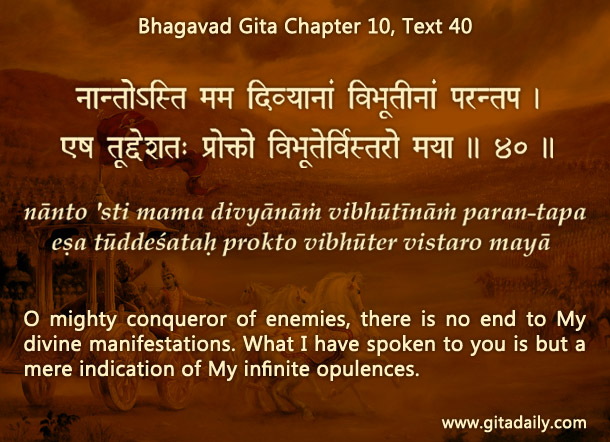The Gita does inform the head, no doubt – and it informs about life’s meaning and purpose far better than does the best university education. However, its purpose is not to inform the head as an end in itself, but as a means to the end of love – eternal love for the all-attractive Supreme Person Krishna.
The moment of the Gita’s delivery doesn’t alter its substance, but it does shape its form
This essential call for love is trans-historical, yet it was delivered at a particular moment in history. And that moment, though not altering the Gita’s substance, does shape its form. People’s social mores, political structures and cosmological conceptions then were substantially different from ours. The Gita naturally refers to those things to illustrate its message. Yet those very references that made it accessible for its original audience can make it inaccessible for us, coming as we do from a different frame of reference.
This difficulty can trouble us especially in the Gita’s tenth chapter, which uses then-contemporary examples to convey how things attractive to materially minded people manifest Krishna’s opulence. We can try to understand those examples, but if we make gaining that information the purpose of our Gita study, we will miss the underlying principle. That principle is stated towards the end of that chapter (10.41) – whatever attracts us does so because it manifests a spark of Krishna’s all-attractiveness. In fact, the previous verse (10.40) states that as the list of such opulences is endless, only a few are spoken, thereby downplaying the details and stressing the principle.
Accordingly, rather than straining to understand what things attracted people in the past and why, we can better strive to understand how the things that attract us now manifest Krishna’s opulence and how we can redirect our heart from them to him. That heart transformation alone will grant us lasting fulfillment.

Explanation of article:
http://www.youtube.com/watch?v=XVHZg03n7lc

Leave A Comment